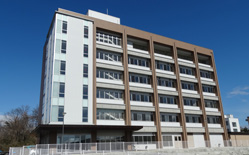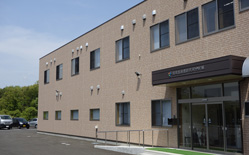A Message from Our New Director

Since its establishment in July 2013, Institute of Environmental Radioactivity (IER) has tackled challenges associated with environmental radioactivity after the Fukushima Daiichi Nuclear Plant accident. Meanwhile, our organizational framework has also been developed into the current form by 2017, including the construction of both analytical and main buildings. In 2019, IER has launched the Joint Usage / Research Center program with other five institutes: Center for Research in Isotopes and Environmental Dynamics (CRiED) of Tsukuba University, Institute of Radiation Emergency Medicine (IREM) of Hirosaki University, Sector of Fukushima Research and Development of Japan Atomic Energy Agency (JAEA), Department of Radioecology and Fukushima Project of National Institutes for Quantum and Radiological Science and Technology (QST), and National Institute for Environmental Studies (NIES) Fukushima Branch. Through this program, mechanisms have been established (strengthened) for effectively functioning as a hub for accessing to Fukushima samples for collaborative researches between domestic / overseas researchers and IER researchers. Also in 2019, the Master’s program of Environmental Radioactivity Science Major was established as part of the educational function of IER, and the first year students were enrolled.The doctoral program was subsequently established in April 2021, and the first year students were enrolled.
Researchers specializing in radioactivity and radiation in the environment are brought together at IER. With radioactivity and radiation as common subjects, the research fields behind each researcher range from Topography, to Hydrosphere Ecology, Forest Ecology, and Oceanography. IER is interdisciplinary in its nature, which naturally encourages internal collaboration and may allow researchers to initiate new research, with finding new perspectives in the gaps between the research fields that are overlooked in the conventional research targets.
Furthermore, researchers in countries that own nuclear power plants and in neighboring countries pay close attention to the impacts of nuclear accidents on the environment and wildlife from the perspective of preparing for the next radioactive contamination. Accordingly, the researchers who study environmental radioactivity in Fukushima become naturally international. Since its establishment, IER has continued international collaborative researches based on the scientific interests common to researchers in each country. We will continue to promote and enhance collaborative research.
In Fukushima, which was affected by the nuclear accident, the focus gradually shifted to the long-term issues from the urgent challenges that contribute to the emergency measures at the time of IER establishment. In response to this, we need to switch our research subjects to focus on long-term issues. One of the policies for long-term researches is to explore the basics with radionuclide and radiation in the environment put into perspective. For example, in the field of Environmental Dynamics, it is essential to elucidate the basics of hydrological and ecological mass transfer, and as for the radiation-induced morphological abnormality, it is essential to study the basics of morphogenesis mechanisms. It is expected that these approaches will benefit in suggesting measures based on a deep understanding about the environment and nature.
In addition to its interdisciplinary and international characteristics, most importantly, IER established at Fukushima University after the nuclear accident, has deep ties with the local community. We believe that it is important to value communication with the local people, to conduct research that fits to the changes of their situation and interests, and to continue to share our research results and findings to the local community. We will continue to strive to manage the institute for effectively conducting research with cooperation of the people concerned and local communities. We would be grateful for your continued support and cooperation.
History
| 2011 March | Great East Japan Earthquake and TEPCO Fukushima Daiichi Nuclear Power Plant accident occurred. |
| 2012 August | The first meeting of the Establishment Preparation Committee |
| 2013 March | Decision to be granted subsidy for enhancing and promoting national university reform from The Ministry of Education, Cultures, Sports, and Technology |
| 2013 July | Institute of Environmental Radioactivity was established. |
| 2014 July | Completion of the building for analyzing in Institute of Environmental Radioactivity |
| 2017 Feb. | Complete the main building of IER |
| 2018 June | Joint Use/Research Center approved |
| 2018 August | Master’s program approved |
| 2019 April | Joint Usage / Research Center program launched (until March 31, 2020) |
| 2019 April | Master's program established |
| 2020 July | Doctoral program approved |
| 2021 April | Doctoral program established |


Main building Analyzing building |
|
IER Pamphlet
 |
Download PDF Last Update: August 2020 |